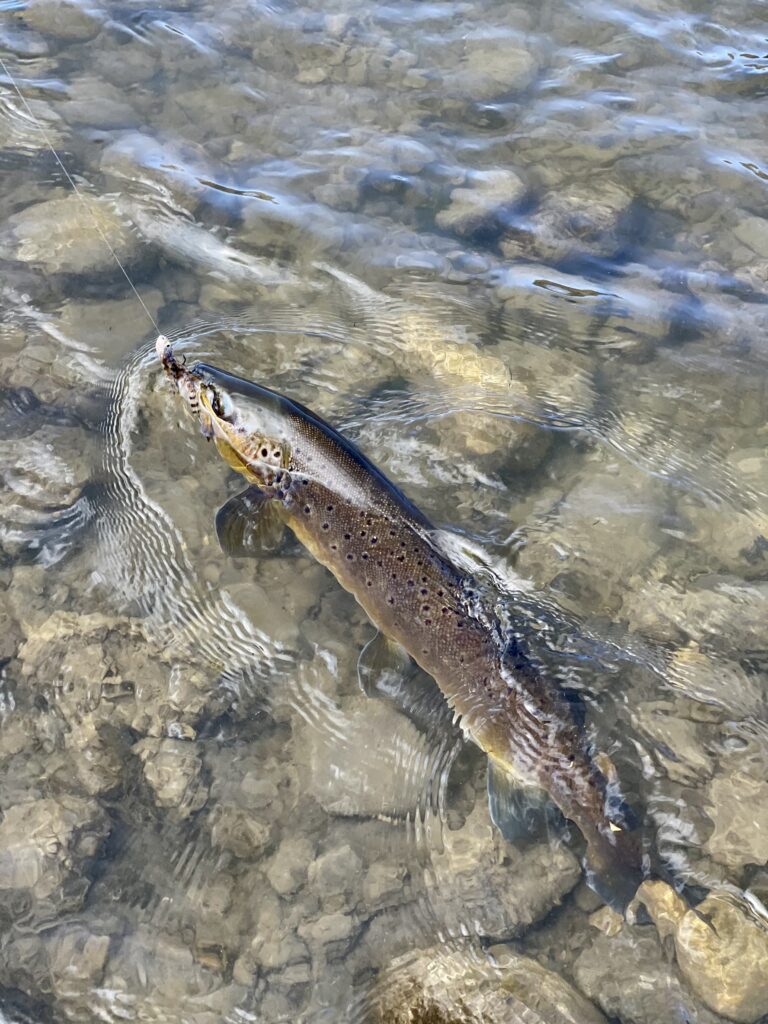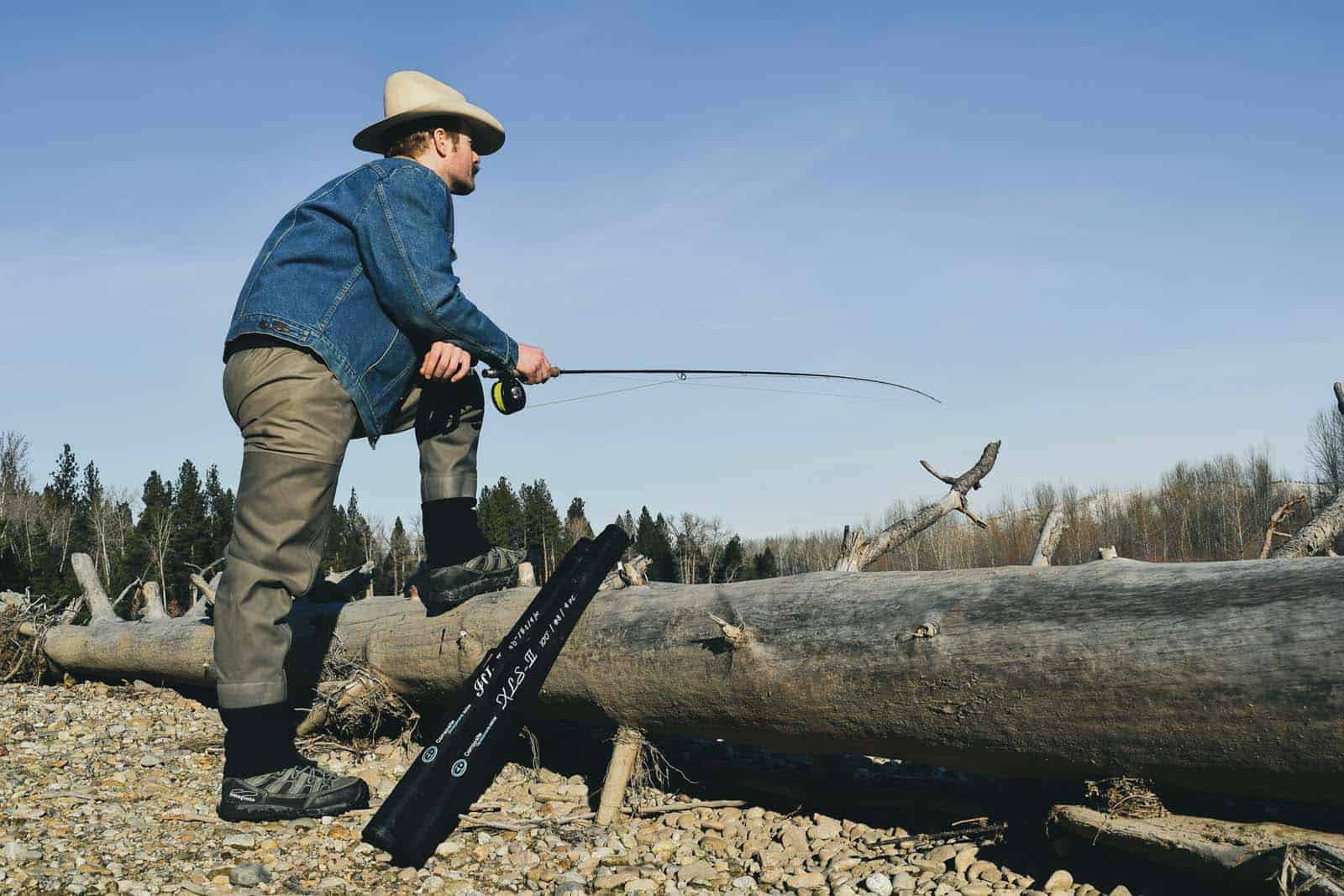The Big Brown Road Trip: Chapter 1
Gale-force winds, the meat sweats, and running out of gas; a springtime traverse through the Northern Rockies in search of a two-foot brown trout gets off to a rocky start.
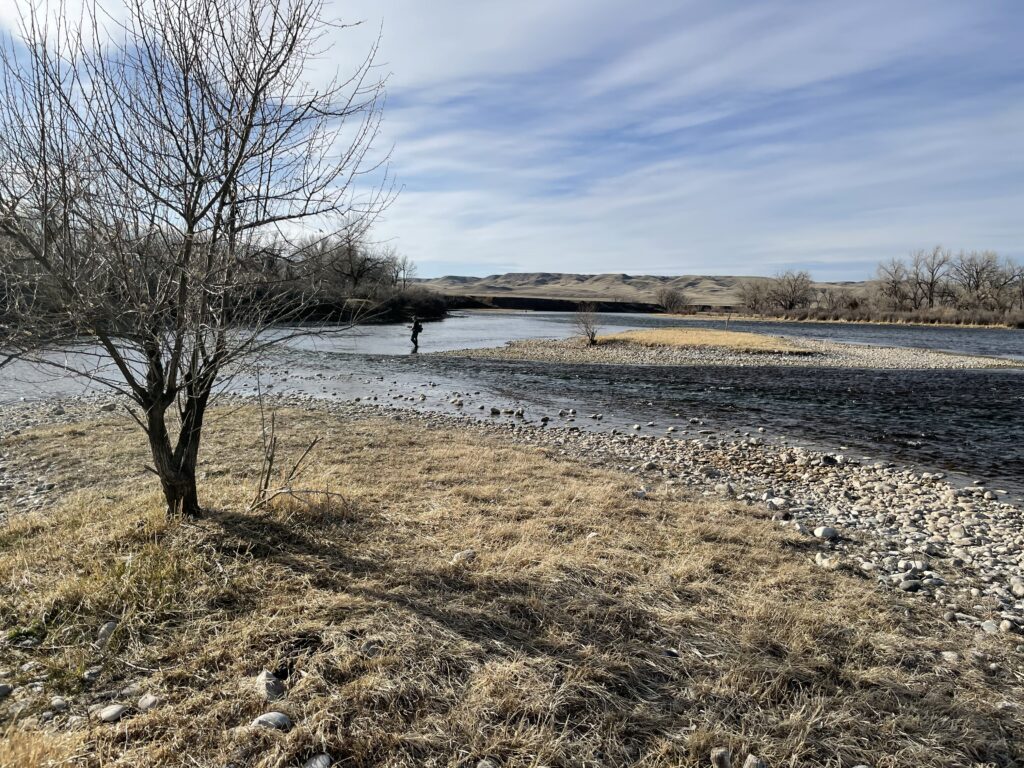
As is customary in Montana, my buddy drives like a bat outta’ Hell. Nor rain, nor sleet, nor snow can stop the determined outdoorsman from maintaining 80 on the interstate. Having learned to drive in Oregon, where 55 was the maximum speed on even the loneliest desert byway, the rapid pace has been an adjustment. Even after nearly 20 years of hauling ass around the Big Sky, the traffic still reminds me of the Autobahn, with one-ton trucks flying by rather than Beemers. I think the Germans would be terrified on I-90 during a whiteout, but today, it was merely the 40 MPH crosswinds that had my attention. With camper in tow (one that didn’t belong to me) I did my best to stay on my friend’s bumper, but a strong headwind barreling out of the Pintler Range separated us and I never caught back up. So, I rolled the dice in Billings, believing I could stretch the fumes in my gas tank and make it to our rendezvous point in Hardin. Alas, I have to hand it to the folks at Chevrolet; the fuel-range estimator in my truck is pretty damned accurate. The digital wizardy calculated that I could run for 43 miles. 44 miles later, within view of the gas station and transfixed on the broadcast of the Gonzaga Bulldogs, the Chevy puttered to a stop. Fortunately, I had a generator full of fuel in the truck bed, and was able to dump enough gas in the tank to make it to the service station, where Justin and Phil greeted me with “WTF” shrugs. Our springtime loop through Montana and Wyoming, dubbed the “Big Brown Road Trip” (BBRT), was off to a shaky start.
Freshly vaccinated but still travel-shy, a mobile campout made more sense than an international itinerary. After a life of fly fishing travel I’ve learned that ample adventure awaits, stateside, and I’d rather spend my time fishing than traveling. Our first stop on the BBRT was the Bighorn River near Fort Smith. I hadn’t fished this ditch in over a decade, neither had my colleagues, but we had all heard the mumblings that the place had gone to shit. The consensus seemed to be that increased discharge from Yellowtail Dam during the spring rainbow spawn had flushed the redds. Ignorance is bliss, and with no frame of reference, we had nothing to bitch about and elected to dump the camper and the drift boat. The winds were getting serious and we deemed floating a bad notion. We opted for wade fishing below the dam.
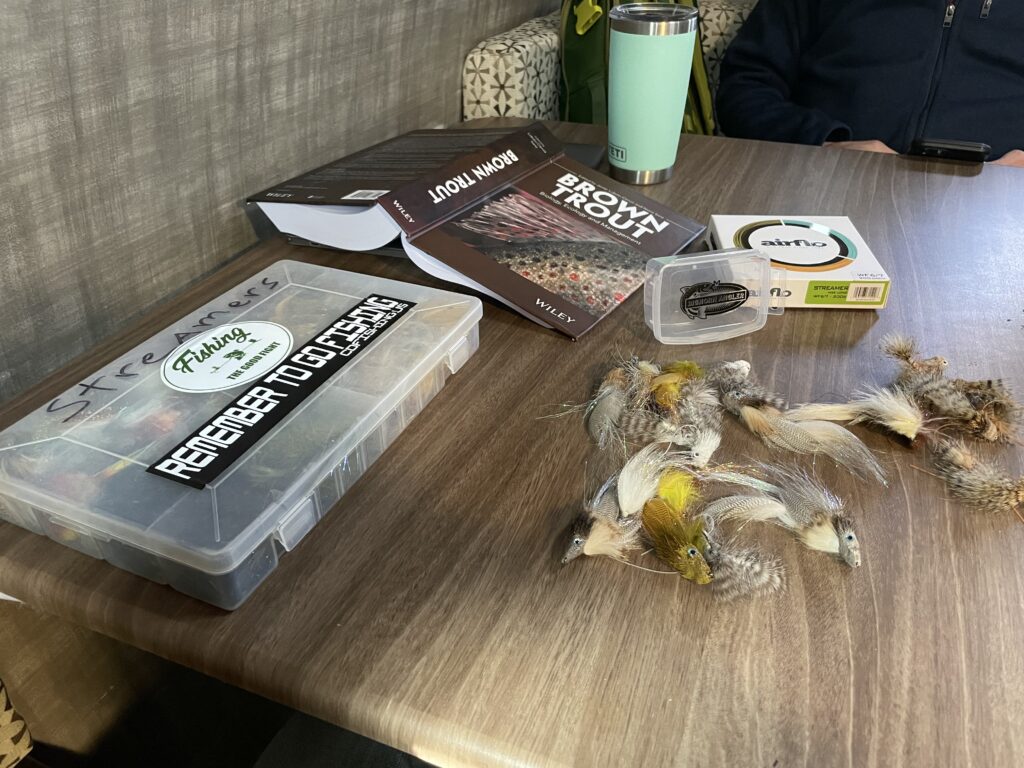
Pulling into the primary boat ramp below Yellowtail Dam, the genesis of one of the country’s great tailwaters, a guy would expect to have trouble finding a parking spot, but the place was a ghost town. This usually isn’t a good sign when approaching a popular access point. Though we all love to think that we’re the first ones here, or know something that the others don’t, the truth is that there aren’t any secrets anymore, and if the locals are in the bar, perhaps you should be too? Had we not just driven five hours to get here, we wouldn’t be putting our waders on, but Buster came to fish.
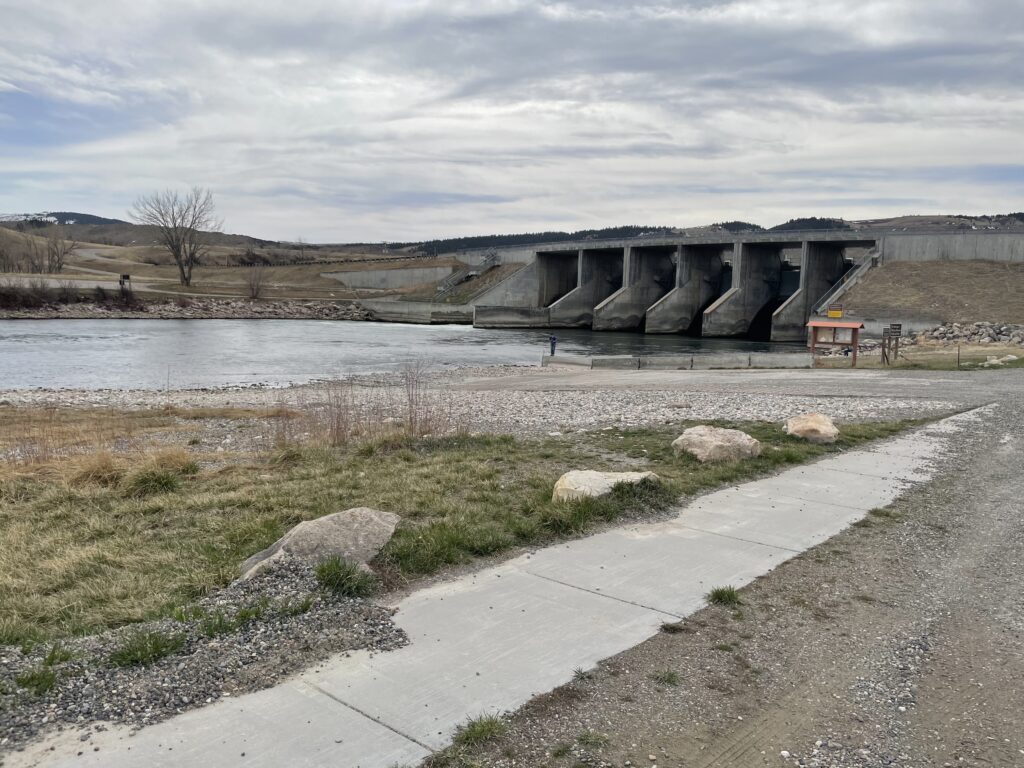
When field-testing products, the more adverse conditions, the better. I plucked a ginger Space Invader from my box and a brown trout attacked the fly on my initial retrieve. I gave a spirited “whoop” to my comrades downstream, perhaps, an unnecessary response for a 12-inch trout, but after running out of fuel and arriving to a downtrodden, windblown scene, I figured a “huzzah!” might boost company morale. Around 7pm, the winds settled down and we were surprised by the arrival of a pleasant evening on the river. For the first time since September, we experienced the sensation of warmth on the skin. The fish were happy too, and I eased into a rhythm on the Bighorn, working long runs like a steelhead angler and finding some really nice browns on the streamer bite.
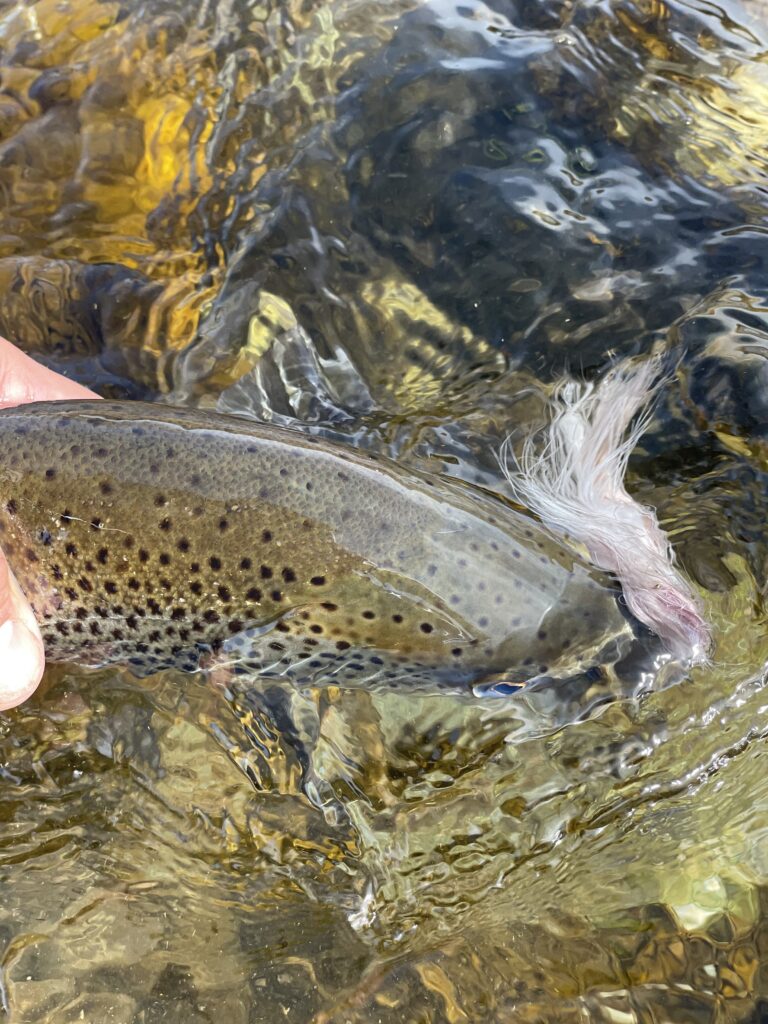
My buddy of the same name is much more on top of shit than this “Justin”. His gear is always clean, organized, and he digs up sound beta prior to a trip. While I tend to wing it, for better, or usually, worse, he stays abreast of USGS flow data, ONX, and Doppler radar. When hauling a camper across I-25 in Wyoming during a spring cold front, “winging it” is akin to unprotected sex in Reno. The forecast called for severe winds for the next 18 hours. We dug in and took extra precaution, tucking the camper between both trucks for added shelter. Likewise, our night’s sleep was tucked somewhere between the din of the gale force winds and the meat sweats, but we never found it.
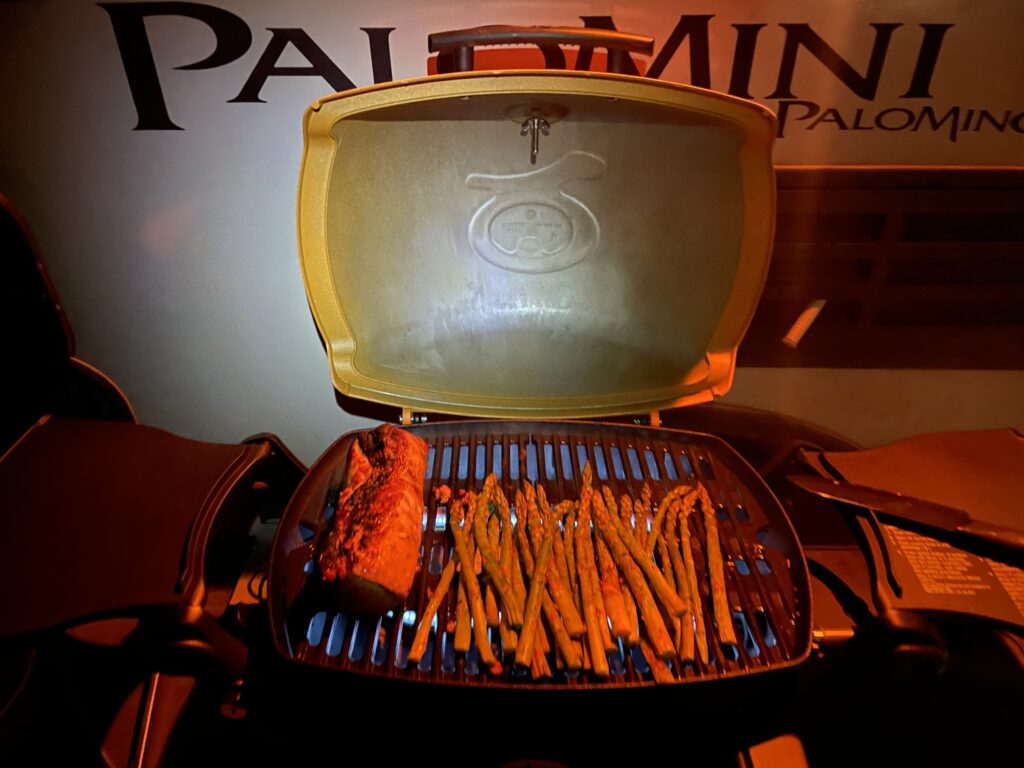
The morning dawned hellacious. Sideways snow, whitecaps on the water, dust devils…the works. Overhead fly casting was futile so I pulled on my big boy pants and armed my 7/8 Allfly with the switch handle and a 510 grain Skagit head. On a brush-lined bank right in front of our camp, I came tight to the first 20-inch brown of the BBRT. He was an old soldier, hook-jawed, rather snaky, and stubborn; just the fish you’d expect to find on a day like this. At around 5PM, the winds blew themselves out and we pulled stakes and aimed for Casper, just in time for tipoff of Oregon State’s Elite 8 matchup vs. Houston. This time, I stopped for gas.
